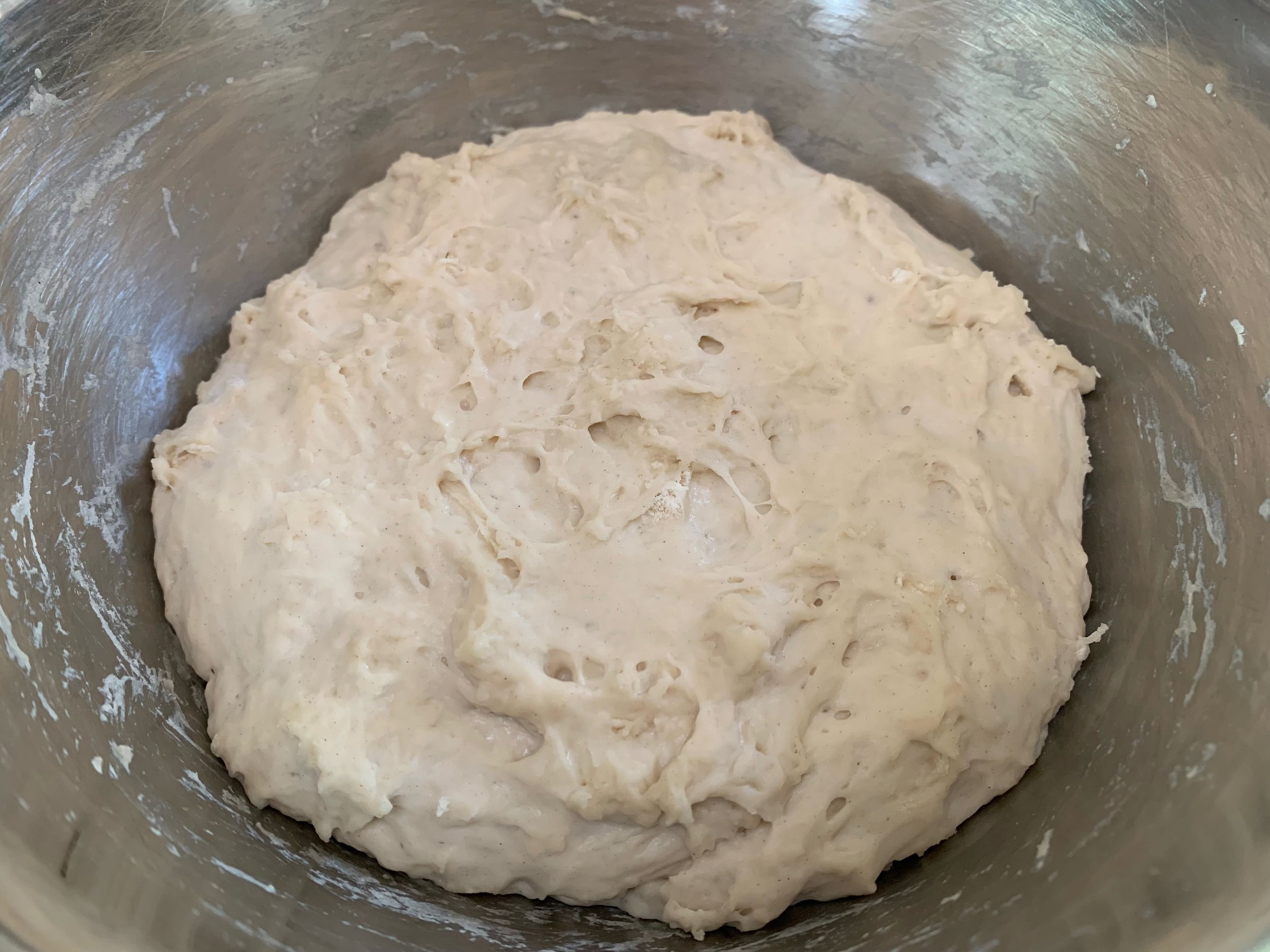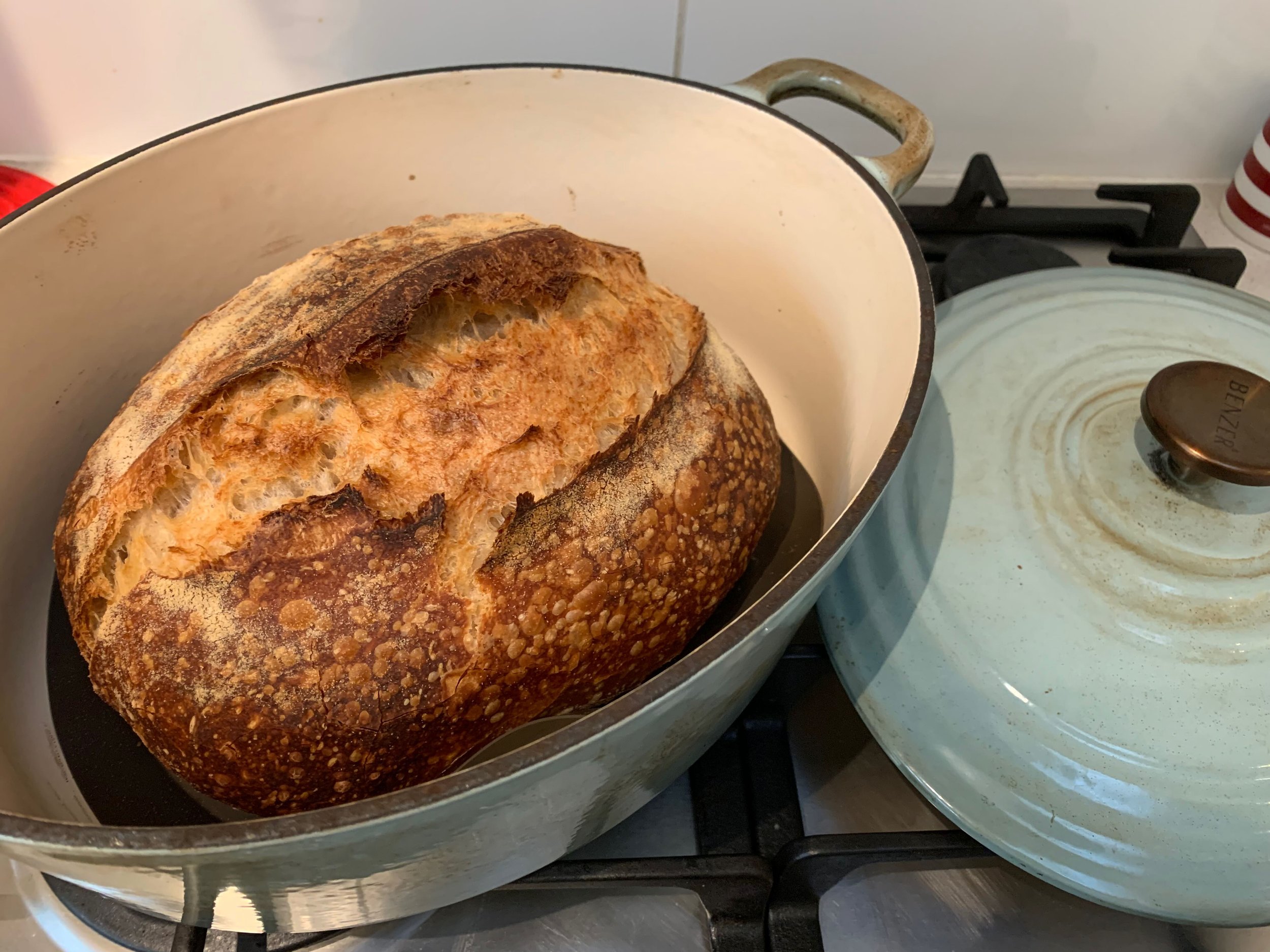Half-baked insights? Try a little sourdough…
I like to bake sourdough bread, even when there isn’t a pandemic on. I like the simplicity of its three ingredients (water, flour, salt) and the sustainability of a recipe that has been around for thousands of years. I like how it makes me plan ahead (will I be at home for the crucial point when the starter is bubbly? Will we all be here to eat it when it’s fresh?) and how excited my friend was when I finally remembered to take her a loaf at Christmas. Sorry it took me 3 years, Cas.
Sourdough has also led to some cracking insights over the last few years. Not researching it (but I’m happy to, if you have a project in mind) or eating it, though it is delicious with a thick layer of butter and jam. Rather, sourdough has given me crucial time to think. After all, it’s hard to multi-task or pick up the phone when your hands are covered in dough.
Baking in the time to think
The most time-intensive stage of sourdough is the kneading. It takes me about 15-20 minutes to stretch, pull and coax the dough to the right consistency - handy for a dip into short podcast, or to mull over a tricky issue without the temptation of email or other distractions. Recently I’ve also been using this time to listen back to snippets of student interview recordings, which can be frustrating (hearing a crucial insight and having to scrape dough off your hands before you can write it down) but also forces single-minded engagement, letting the language and tone of the conversation sink in before drawing conclusions.
Need to use your loaf better? Here are 4 things sourdough can teach us about getting tastier results.
1 - Rush the process, miss the taste
If you want a loaf of sourdough without going to the shops, you’re looking at a 24-hour turnaround, give or take. The sourdough starter must be fed with fresh water and flour, and is only ready to use once it has doubled in size a few hours later (sensitive, much?). Skip resting time at your peril, and for best results, leave it to slow prove overnight in the fridge.
Most researchers have experienced the pressure for fast turnaround projects - get in the field, get insights, analyse and debrief. That may be good enough for quick tests in familiar territory, but to really understand how people are thinking and behaving around a product or service, you need time. Time to listen and speak with them, and time to work through the analysis, coming back to ideas over several days (weeks, if you can).
2 - Pay attention to the basics
My first loaves were flat, heavy, and tasteless, ruined by my assumptions that sourdough behaved like ‘normal’ bread. Once I learned that precise weighing, high-protein bread flour and a hotter oven were needed, it made all the difference. Quality in, quality out.
So it goes with research, which looks suspiciously easy from the outside. But structuring and recruiting a research sample needs careful consideration - who are we looking to understand, what have they done, where will we find them? Are groups best for this topic, or should we do individual interviews, observations on-site, or collaborative workshops? Get the right participants in the right interactions, and you’ll learn 1000% more than you expected.
3 - Don’t rely on the recipe - get involved!
Recipe books only get you so far before you’ve run out of bad words and swear never to touch flour again. The breakthrough for me was a personal recipe, emailed from a family friend and with careful advice on kneading and the overnight proving process. Peggy, you’re a legend and we thank you for your baking wisdom.
Likewise, there’s only so much you can learn about human research from reading books (though Erika Hall’s Just Enough Research is always worth a dip). The sooner you get in the field, observe experienced moderators and discuss what works in real life, the better. I love talking with other researchers about the little things that matter - how to make sure a participant feels welcome and comfortable, for example, and gentle techniques for eliciting hard-to-articulate experiences.
4 - Keep some for next time
Before you put away the flour and clean up the mess, there’s an important step in sourdough baking: feed the starter so it’s ready for next time. If the starter dies or runs out, you’re back to square one - building from scratch for at least a week before you can bake again.
Insights are often ‘lost’ inside organisations - filed away or forgotten in pursuit of the next big project, throwing away time, money, and participants’ personal contributions. If we design and build on the foundations of previous insights, on the other hand, we not only save time by not re-inventing the wheel, but can also get a little further each time we run research. Some people keep their sourdough starters alive for 10+ years - can you say the same for your insights?
So there you have it. Want tastier, more sustainable insights? Take your time to warm up, be disciplined about the boring basics, reach out for the wisdom of your network, and keep a little insight handy for next time.
Just want better sourdough? Let me know and I’ll send you the recipe!





